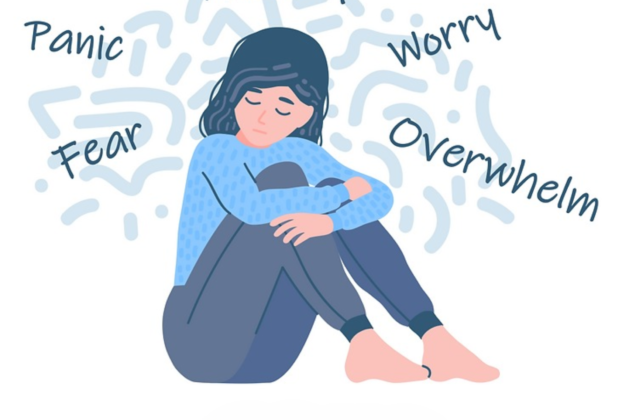Anxiety attacks are an overwhelming experience that can strike unexpectedly, leaving you feeling paralyzed by fear. These intense emotional reactions are not just in your head; they have a real, physical basis in the brain. Understanding what happens in your brain during an anxiety attack can help you cope with the feelings of panic and take proactive steps toward managing them. In this article, we’ll explore the brain regions involved in anxiety attacks, particularly the amygdala and prefrontal cortex, and how they interact to create the intense feelings of fear. We’ll also cover ways to cope with these attacks, offering practical strategies to help you regain control over your emotions.
Table of Contents
What Happens in the Brain During an Anxiety Attack?
Anxiety attacks, often referred to as panic attacks, are characterized by sudden, intense feelings of fear and dread. These feelings can escalate quickly and may include symptoms like a racing heart, shortness of breath, dizziness, sweating, and a sense of impending doom. To understand why this happens, it’s crucial to dive into the brain regions that play a role in the experience of fear and anxiety.
The Amygdala: The Brain’s Fear Center
The amygdala is a small, almond-shaped structure located deep within the brain. It is responsible for processing emotions, particularly fear. When you encounter a stressful situation—whether it’s a real threat or a perceived one—the amygdala kicks into action. It detects potential dangers and sends signals to the body to prepare for fight-or-flight responses, such as increased heart rate, heightened awareness, and muscle tension.
During an anxiety attack, the amygdala becomes hyperactive. Even if there’s no actual threat, it might perceive a situation as dangerous and trigger the body’s fear response. This is why anxiety attacks can feel so intense—your body reacts as though it’s in immediate danger, even when there’s no physical threat.
The Prefrontal Cortex: The Brain’s Rational Thinker
While the amygdala is the fear center of the brain, the prefrontal cortex (PFC) is involved in higher-order functions such as reasoning, decision-making, and emotional regulation. The PFC helps you analyze situations logically and regulate your emotions, essentially acting as a brake on the fear response initiated by the amygdala.
However, during an anxiety attack, the PFC often doesn’t function optimally. The stress and intensity of the emotions can overwhelm the PFC, which means it struggles to calm the amygdala and regulate your emotional state. This imbalance leads to the uncontrollable feelings of fear, panic, and dread that accompany an anxiety attack.
The Hippocampus: The Memory Link
The hippocampus, which is involved in memory formation, also plays a role in anxiety. It helps store memories related to past experiences, including traumatic or stressful ones. In some cases, the hippocampus may trigger an anxiety attack by recalling these memories and prompting the brain to react to them as though they were happening in the present.
For individuals with PTSD or a history of trauma, the hippocampus can contribute to the frequency and intensity of anxiety attacks. A past traumatic event may be “replayed” in the mind, sparking a fear response even in a safe situation.
How the Brain Reacts to Fear: Fight or Flight
When a person perceives a threat—whether real or imagined—the amygdala sends signals to the hypothalamus, which activates the autonomic nervous system (ANS). This system controls bodily functions that are not under conscious control, like heart rate and respiration. The hypothalamus triggers the fight-or-flight response, preparing the body to either confront the danger or flee from it.
In the case of an anxiety attack, however, the body experiences this heightened state of alertness without any actual threat present. This misfiring of the brain’s alarm system causes the body to react as if it’s in danger, even when there’s no real threat to deal with.
How to Cope with Anxiety Attacks
Understanding the science behind anxiety attacks is the first step toward managing them. Fortunately, there are several strategies that can help you cope when you feel an anxiety attack coming on or when you’re in the middle of one.
1. Practice Deep Breathing
One of the most effective ways to counteract the fight-or-flight response is through deep breathing exercises. Slow, controlled breathing can help activate the parasympathetic nervous system (the “rest and digest” system), which helps calm your body and reduce the physical symptoms of anxiety.
Try the 4-7-8 breathing technique:
- Breathe in through your nose for 4 seconds.
- Hold your breath for 7 seconds.
- Exhale slowly through your mouth for 8 seconds.
This breathing pattern helps slow your heart rate, relax your muscles, and signal to your brain that you’re not in danger.
2. Ground Yourself
Grounding techniques can be particularly helpful during an anxiety attack. These exercises are designed to help you focus on the present moment and break the cycle of negative thinking that fuels anxiety.
Try the 5-4-3-2-1 grounding exercise:
- Name 5 things you can see.
- Name 4 things you can feel (like the ground beneath your feet or the texture of your clothes).
- Name 3 things you can hear.
- Name 2 things you can smell.
- Name 1 thing you can taste.
This method helps redirect your attention away from the anxious thoughts in your mind and back to the physical environment around you.
3. Challenge Negative Thoughts
Remember, your brain is overreacting due to the amygdala’s hyperactivity. By practicing cognitive behavioral techniques, you can challenge the irrational thoughts that fuel anxiety attacks.
Ask yourself:
- What evidence do I have that this fear is real?
- Have I experienced similar feelings before, and what helped me manage them?
- What’s the worst that could happen, and how likely is it?
By examining these thoughts, you can weaken the grip of fear and gain perspective on the situation.
4. Consider Professional Support
If anxiety attacks are frequent or severely impact your quality of life, consider seeking professional help. Cognitive Behavioral Therapy (CBT) is particularly effective in treating anxiety by helping individuals identify and reframe the thought patterns that contribute to anxiety. In some cases, medication may also be recommended to help regulate the brain’s chemical balance and prevent anxiety attacks.
Conclusion
Anxiety attacks are powerful experiences that can leave you feeling overwhelmed. However, understanding the brain’s role in these attacks can provide you with a sense of control and empowerment. The amygdala, prefrontal cortex, and hippocampus all play significant roles in how we experience fear, but with the right coping strategies, you can reduce the intensity and frequency of anxiety attacks. Whether through deep breathing, grounding techniques, or seeking professional support, it’s possible to regain control over your emotions and live a more peaceful, balanced life. Remember, you’re not alone in this—help is available, and with the right tools, you can manage and overcome anxiety attacks.
Read More: Burnout Be Gone: Holistic Strategies to Thrive in a 24/7 World





Usually I do not read article on blogs however I would like to say that this writeup very compelled me to take a look at and do so Your writing taste has been amazed me Thanks quite nice post
Wow wonderful blog layout How long have you been blogging for you make blogging look easy The overall look of your site is great as well as the content